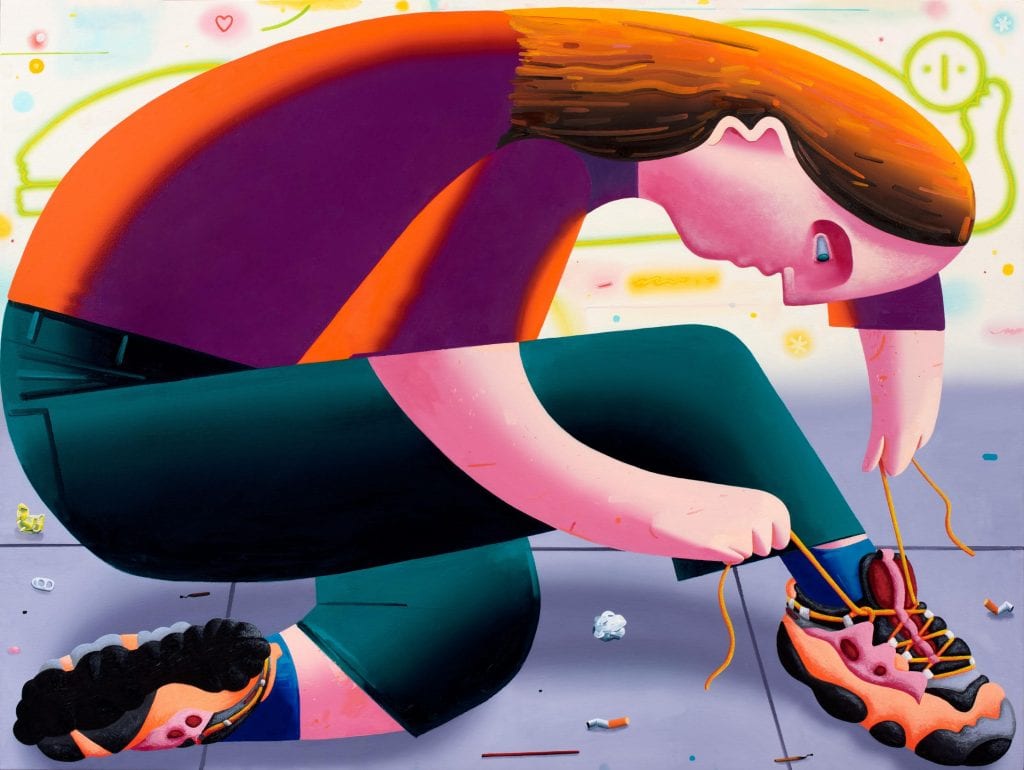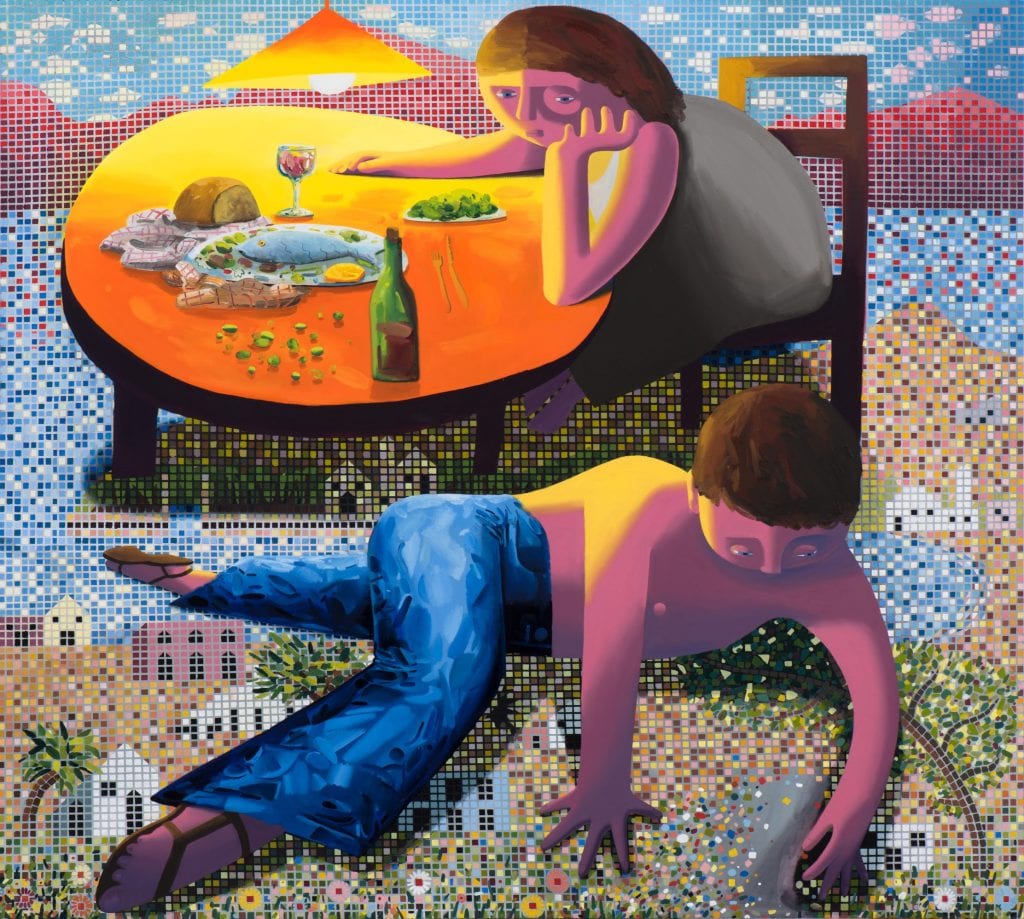Eleanor Swordy creates works that originate from a combination of her imagination and memories. Her work contains layers of imagery with certain details that may not pop out upon first glance but begin to appear during a prolonged viewing. The effect is a playful sensory experience, full of excitement and intrigue as well as a compositional style that feels entirely her own. Swordy is based in Brooklyn, NY.

What is your process like? What does a day in your studio look like?
I begin by making drawings in a free-associative and haphazard way. I make them as quickly as possible and let them pile up until I have dozens of images. I then sift through the pile and select the drawings that contain compositional or narrative suggestions which align with what I want to represent using paint. My approach to painting is very decisive so I spend a lot of the time up front negotiating the image followed by layers of increasing detail. I usually work on several paintings simultaneously, rotating between them every few days, to accommodate a steady work flow and time to reflect.

Your work seems to capture very specific moments in time. Where do these moments originate?
They originate at the intersection of this drawing practice with my imagination and memory. The paintings are created through a process of searching and negotiation so the subject matter most frequently represents temporal moments which have become revealed to me. Toward the end of a painting I like to solidify the subject by embedding suggestive clues around the image to reinforce tension between the enigmatic situation and the desire to have it be explainable.

Who are the figures you paint?
They’re there for you! To hold the space and to guide your eye around the image. They participate in the internal logic of the painting and make sense of the image by being active within it.
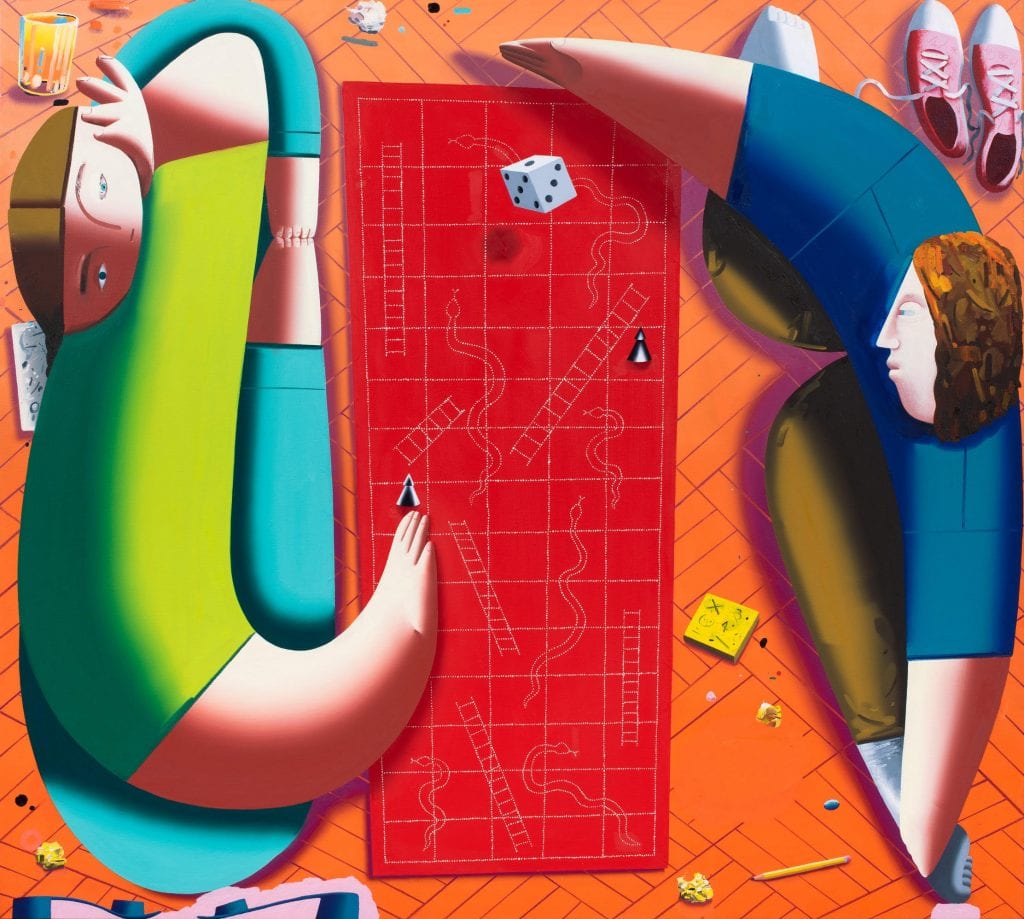
Have you always painted in this specific figurative style?
Yes, more or less. I think the specific style has evolved to meet the demands of the work but the cartoonish figure has been well ingrained since childhood. That said, within each painting I jump around stylistically in an attempt construct an internal rhythm so the compositional hierarchy is determined by the amount of attention varying elements receive.
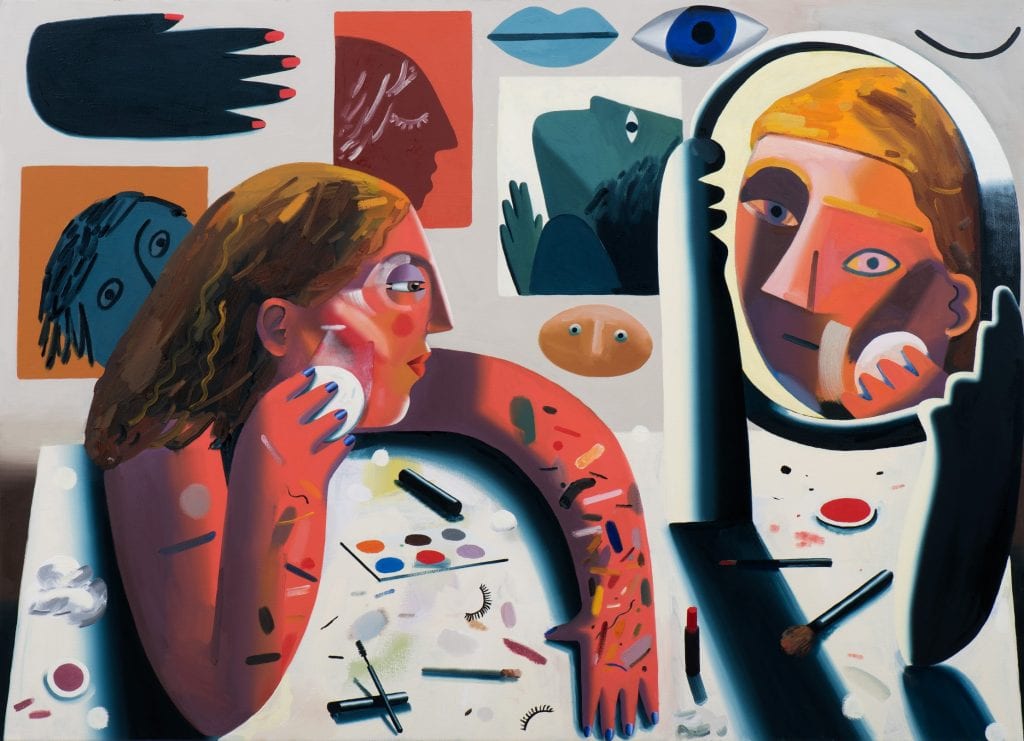
Is there a certain feeling you try to capture in your work?
I would like the paintings to have a slow release, so that it takes a moment to discover everything and smaller details punctuate the overall image like the punch line of a long joke. I suppose the feeling I’m going for is an experience of recognition, followed by tension or bewilderment and then comic relief. Regardless, I believe that representational painting necessitates a level of vulnerability which precludes the potential for all feelings so I often learn more about the work from people expressing responses I didn’t account for.
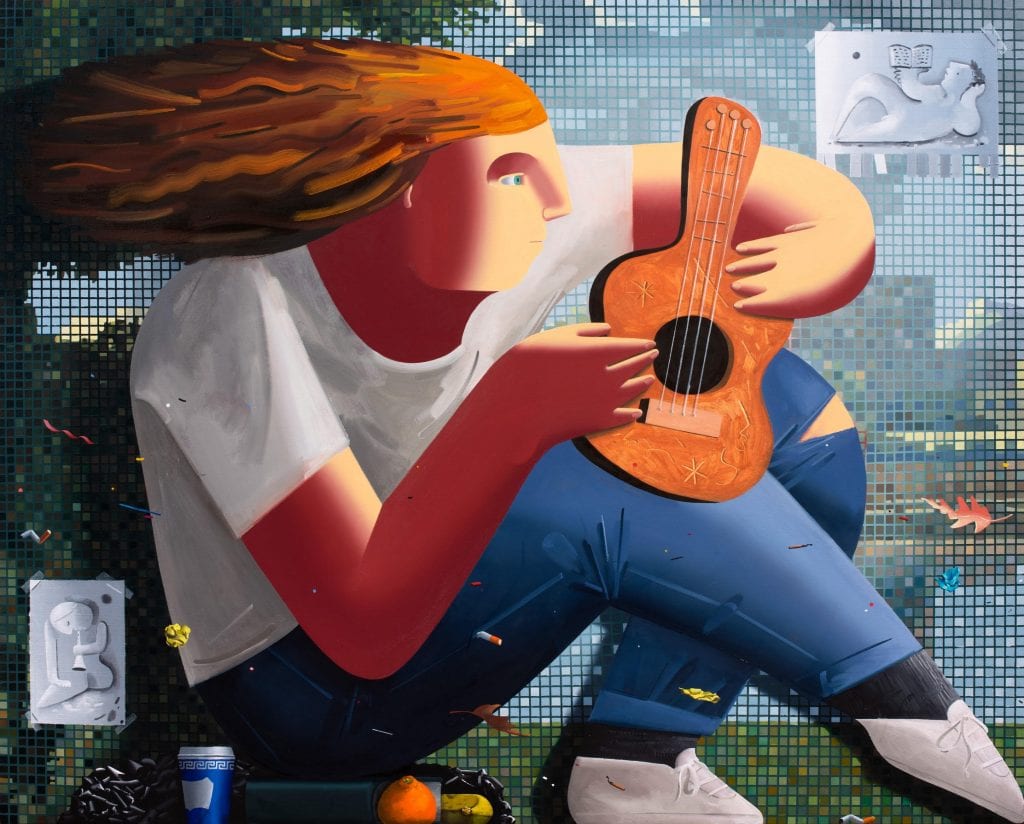
Who are some of your favorite artists working today?
Christina Forrer, Jordan Kasey, Kyle Staver, Keegan Monaghan, Louis Fratino, Caitlin MacQueen, Ebecho Muslimova, Leigh Ruple… to name a few.
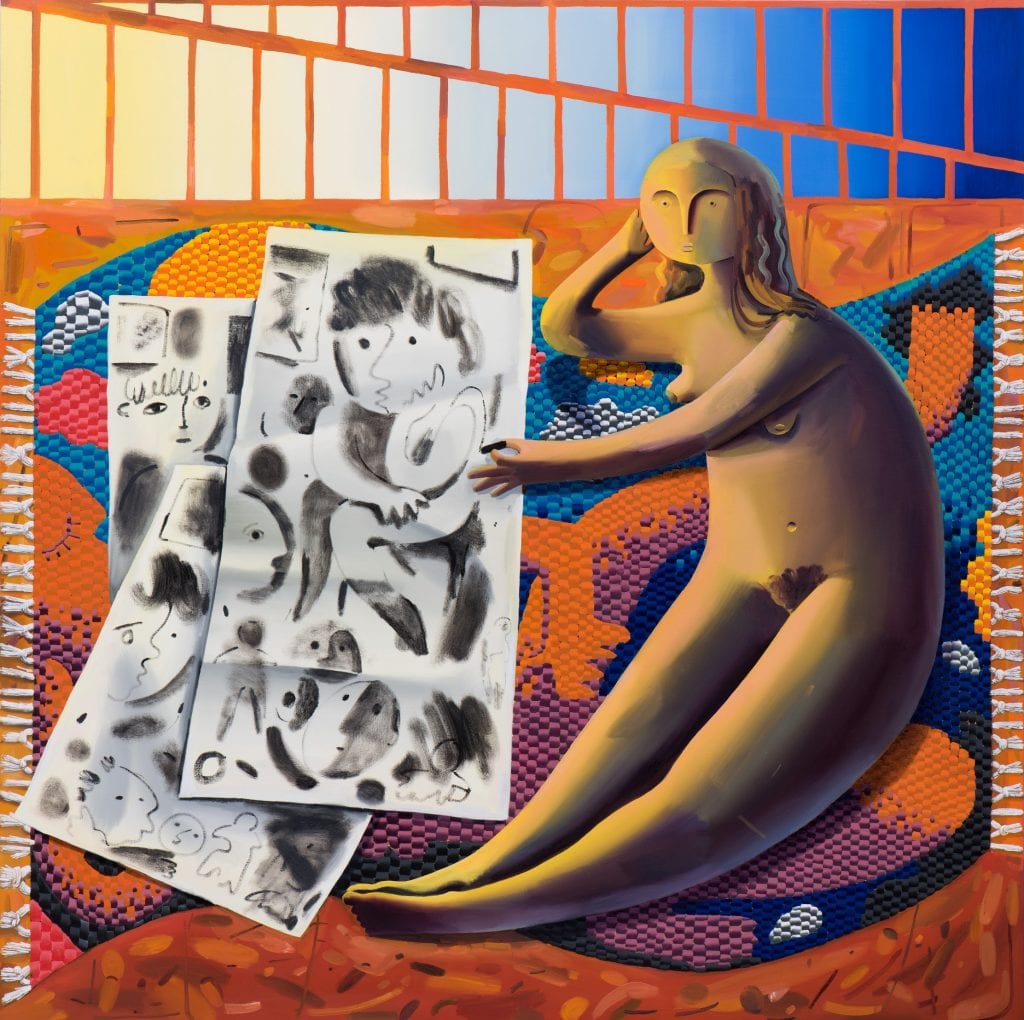
You are preparing to show a new body of work at Journal Gallery. What can we expect to see? What has you excited about these works?
These paintings are part of a larger body of work from this year but specifically represent my experience of being back in New York. The process of making them lead me toward some unexpected strategies so I’m excited to see how these new techniques continue to coalesce in future works.
